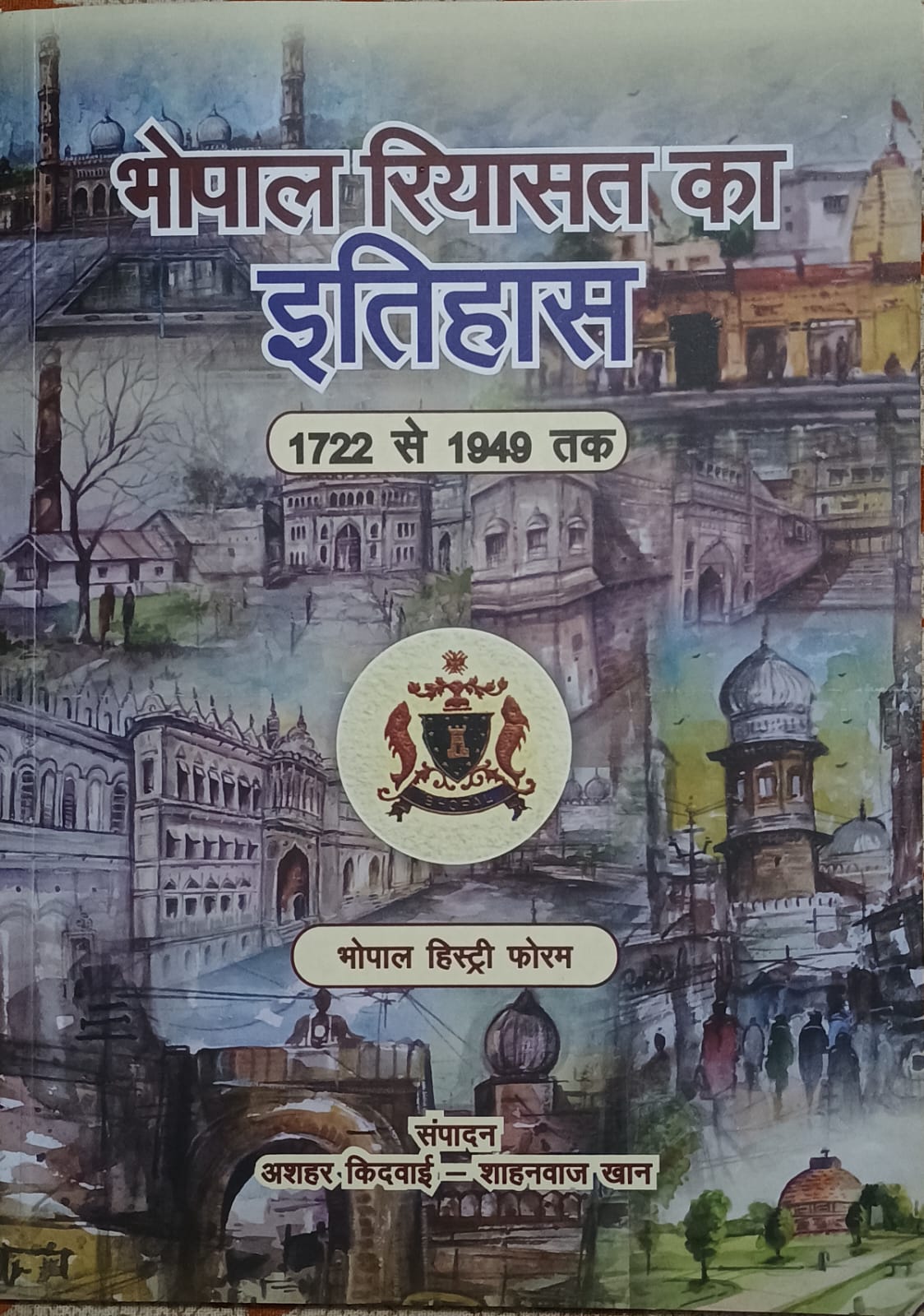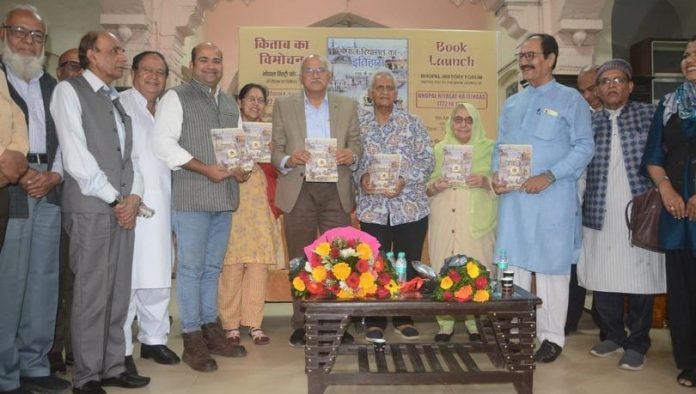– Pervez Bari
Bhopal, March 14: A book, “History of Bhopal Riyasat from 1722 to 1949” on the authentic history of Bhopal state was released at the Maulana Azad Central Library here the other day in a simple but impressive function amidst a host of enthusiastic intellectuals comprising the young and the grey-haired both.
The 333-page book has been brought out by Bhopal History Forum (BHF), which is working to save the old Ganga-Jamuni culture of Bhopal by connecting people from every section of society with the youth and elders to save the history, art and culture of the princely state of Bhopal.
This book aims to dispel myths, fiction, fantasy, misinformation, etc. about the rulers of Bhopal state ruled by its founder Dost Mohammad Khan and his descendants. A group of dedicated young and old mortals got together under the banner of BHF and established the authenticity of the facts lost in the face of parables and fabrications by vested interests to defame the rulers.
It was generally believed that the princely state of Bhopal was merged with the Government of India in 1949. This became a contentious issue between the people living here from the time of Independence with two narrations – one, that the merger took place in 1949 while the other that it happened in 1947 when India got Independence.
 However, BHF unravelled the truth with solid documentary proof. The book presents the document of merger of Bhopal State with the Union of India signed by Nawab Hameedullah Khan at 8:15 pm on 14th August 1947. Its basis is the Instrument of Accession. The Nawab was asked to look after the administrative system until the constitution was framed. This document has the signatures of Nawab Hameedullah Khan and Lord Mountbatten, the Governor General of India. The Nawab had, however, requested Lord Mountbatten and the Government of India not to make this information public.
However, BHF unravelled the truth with solid documentary proof. The book presents the document of merger of Bhopal State with the Union of India signed by Nawab Hameedullah Khan at 8:15 pm on 14th August 1947. Its basis is the Instrument of Accession. The Nawab was asked to look after the administrative system until the constitution was framed. This document has the signatures of Nawab Hameedullah Khan and Lord Mountbatten, the Governor General of India. The Nawab had, however, requested Lord Mountbatten and the Government of India not to make this information public.
While BHF convener Adv. Shahnawaz Khan claimed that there was a movement to merge the princely state of Bhopal with Madhya Bharat province. While the Bhopal state was already merged with the Union Government in 1947.
The book aims to revive forgotten stories and the voices of those who lived within the confines of Bhopaliyat. This meticulously crafted tome, launched amidst anticipation and scholarly fervour, is nothing short of a masterpiece.
The book has been edited jointly by erudite historian Asstt. Prof. Ashar Kidwai and Adv. Shahnawaz Khan. It transcends mere narration, offering readers an immersive odyssey through the corridors of time. With eloquence and insight, the book unfolds rich tapestry woven from archival documents, letters, transcripts and eyewitness accounts.
The editors and contributors have negated the adverse and objectionable comments made by some right-wing politicians and others from the cinema world that put the rulers of Bhopal in very poor light. While burning proverbial midnight oil to search through the historical records available in the National Archives of India, Bhopal Branch and Madhya Pradesh State Archives along with in some personal libraries and collections they dug up the truth to nail the adversaries spreading fabricated stories.
The book’s launch ceremony was graced by Santosh Choubey, Chancellor of Rabindranath Tagore University, as chief guest and environmentalist Rajendra Kothari as special guest. Well-known personalities like Dr. Razia Hamid, Nisar Ahmed (Rtd. IAS), Mohammad Asghar, Assistant Director of National Archives of India, Bhopal Unit; Archivist Mirza Mumtaz Beg, Social worker Kalim Akhtar, Mukesh Verma, Chairman of Vanmali Srijan Peeth; Ratna Wadhwani, Librarian of Maulana Azad Central Library, Bhopal; Zainuddin Shah, Secretary of Saifia College Society; Khalid Mohammad Khan, Rizwan Ansari, Syed Khalid Ghani, Sarwat Zaidi, etc. along with other distinguished citizens were present on the occasion.
Speaking on the occasion, Santosh Choubey narrated an incident related to Rabindra Nath Tagore, who had come to Bhopal in 1931. After his return to Calcutta, Tagore wrote a letter to the Nawab, thanking him for his warm hospitality and honour extended to him. The letter finds place in the book.
Rajendra Kothari recalled that Nazir Khan of Mewati gharana, the musician of Nawab Hameedullah Khan, died in Bhopal and is buried here.
This book is divided into seven sections containing 48 articles by various authors with some rare pictures. The book is in Hindi but has two chapters in Urdu also.
In sum, “History of Bhopal Riyasat from 1722 to 1949” is a tour de force that will enrapture both seasoned historians and casual enthusiasts alike. Its rich prose, meticulous research, and insightful commentary make it an indispensable addition to any library.
The book is available on Amazon and with AISECT Publication, Bhopal.




